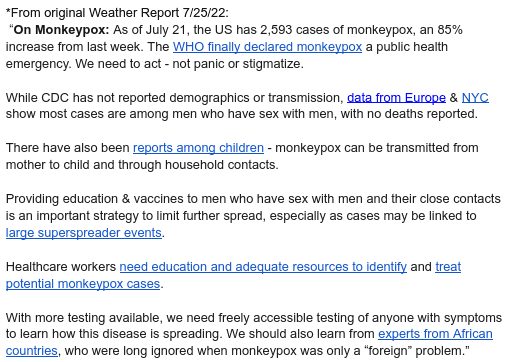El clima: Seguimos en un aumento sostenido de COVID: cada semana desde principios de junio, 99% de la población de EE. UU. vive en transmisión alta o sustancial.
De hecho, hemos actualizado nuestra mapa de transmisión (h/t @JasonSalemi) para mostrar cuán alta es la transmisión, ¡73% vive en los dos niveles más altos!
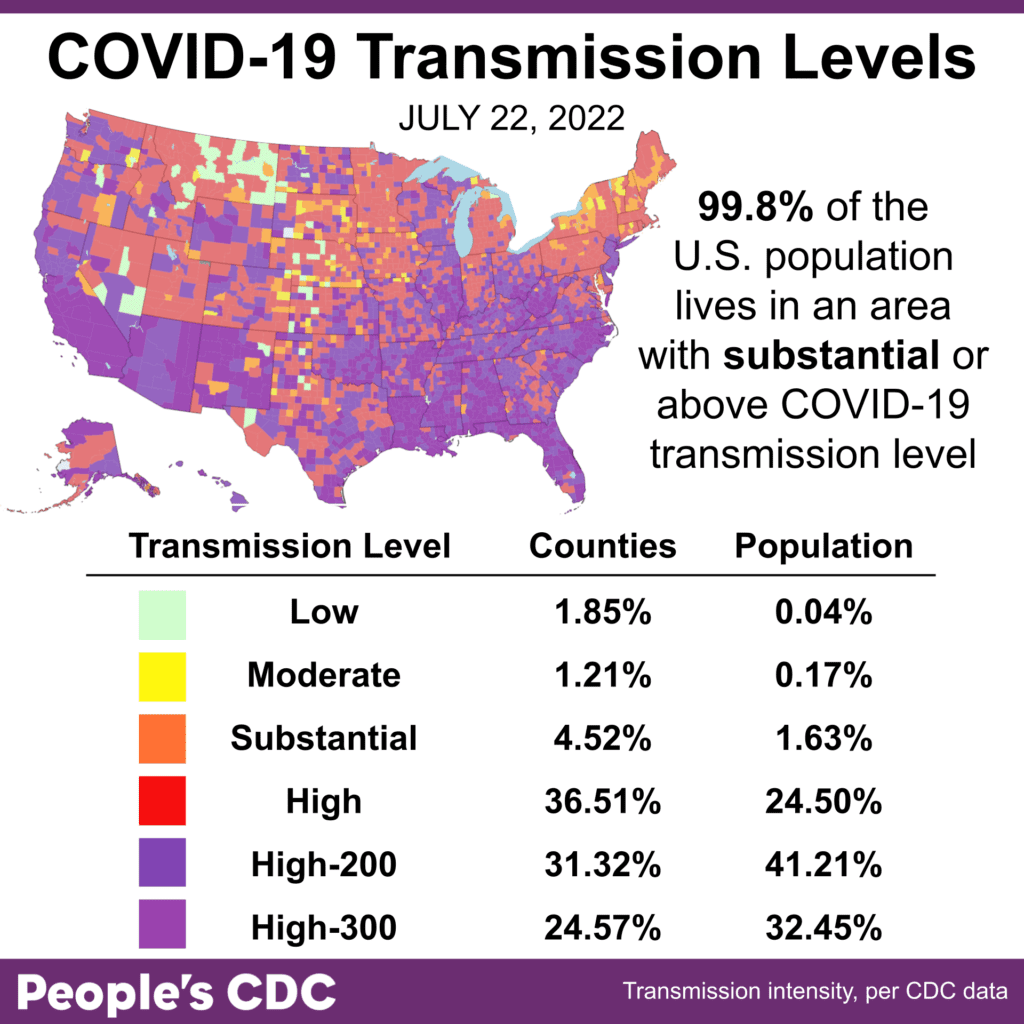
Mira la difusión aquí: https://www.youtube.com/watch?v=QGsKEGL0bvg
Sobre variantes: Tiempo BA4/5 ahora componen 90% de casos a nivel nacional, aún no están surgiendo nuevas variantes.
Se ha detectado Centaurus (BA2.75) en algunos estados, pero no está claro si superará a BA5. ¡Seguiremos actualizando esto!
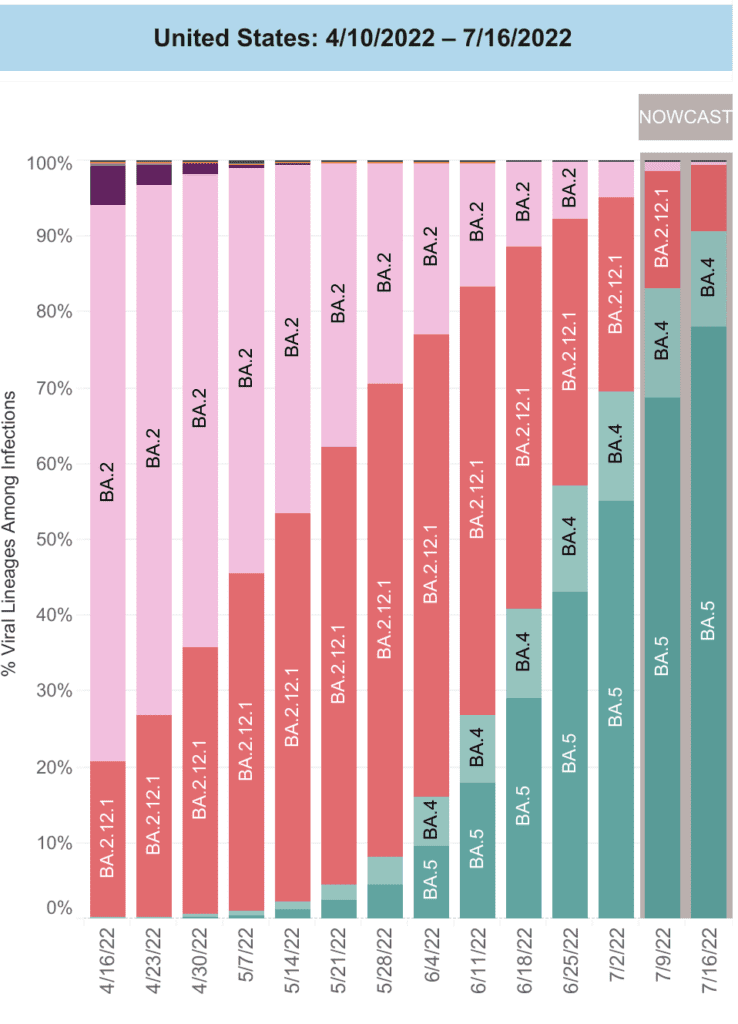
Monitoreo de aguas residuales: aguas residuales nacionales datos de @BiobotAnalytics muestra una pequeña caída por primera vez en meses.
Y, sin embargo, todavía estamos en niveles más altos que cualquier aumento antes de Omicron. Los niveles fluctúan, pero siguen siendo altos en todas las regiones.
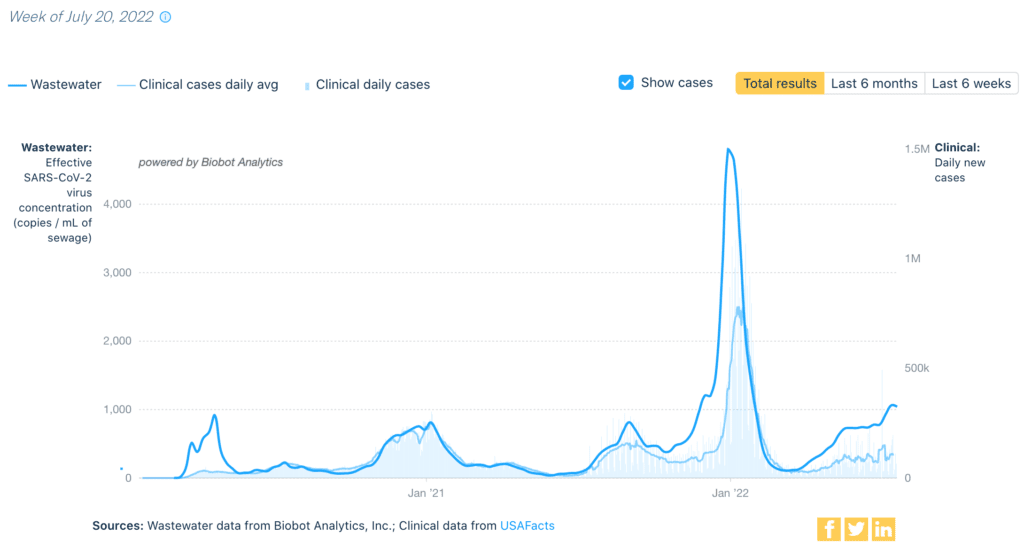
Hospitalizaciones: Durante 13 semanas seguidas, hospitalizaciones siguen aumentando a nivel nacional, con los aumentos más dramáticos entre los mayores de 70 años.
Este aumento sostenido está teniendo un impacto significativo en la salud de muchas personas que viven en los EE. UU., y es insostenible para nuestros trabajadores de la salud.
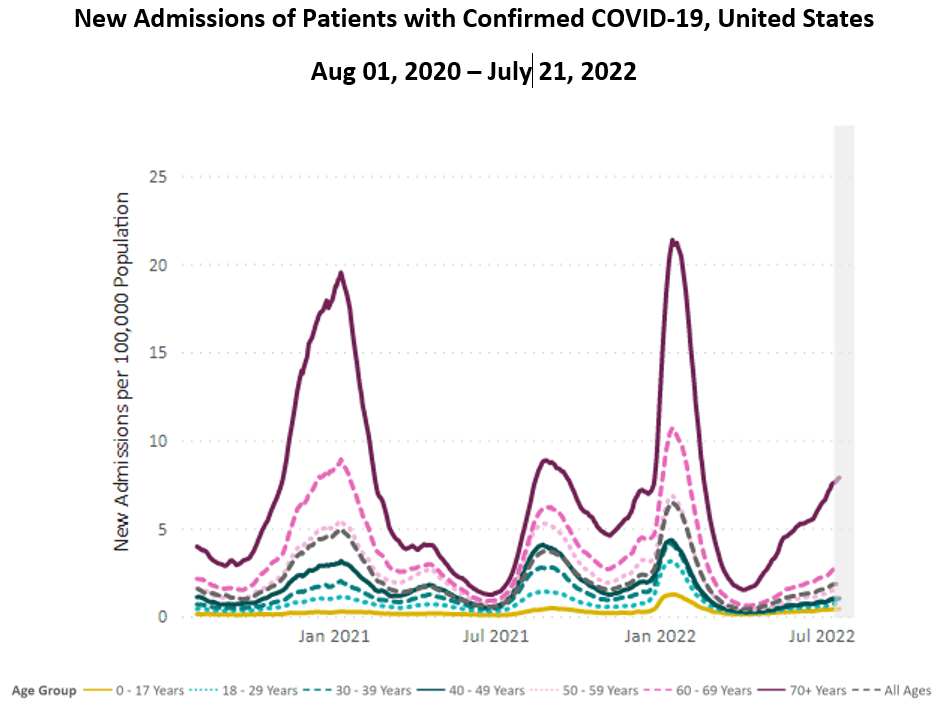
Fallecidos: Del 14 de julio al 20 de julio de 2.468 personas han fallecido por COVID a nivel nacional. Incluso el New York Times comentó cómo esta versión de "normal" es brutal, y la estimación de 100,000 muertos por año casi seguramente se superará este año.
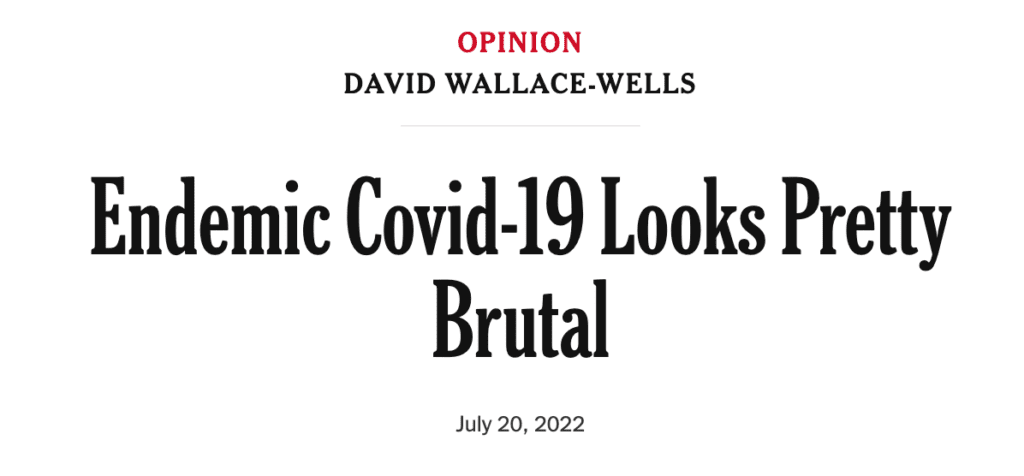
![This is a paragraph of text from the editorial, with a highlighted sentence: “As a ballpark estimate, [Dr Trevor Bedford, an evolutionary virologist] says, going forward we can expect that every year, around 50 percent of Americans will be infected and more than 100,000 will die.”](https://b2626777.smushcdn.com/2626777/wp-content/uploads/2022/07/7.25.22_NYTPart2-1024x325.png?lossy=1&strip=1&webp=1)
Por supuesto, los altos niveles sostenidos de casos, hospitalizaciones y muertes no son inevitables. El gobierno podría elegir una mejor respuesta (vacunas actualizadas, máscaras y pruebas gratuitas de alta calidad, ventilación mejorada y licencia por enfermedad pagada) y crear una "normalidad" mejor y más saludable.
Sobre COVID largo: Otro estudio ha diagnósticos más altos confirmados de diabetes y enfermedades cardiovasculares en las 4-12 semanas posteriores a una infección por COVID. Esto sugiere la necesidad de un mayor control durante la recuperación temprana.
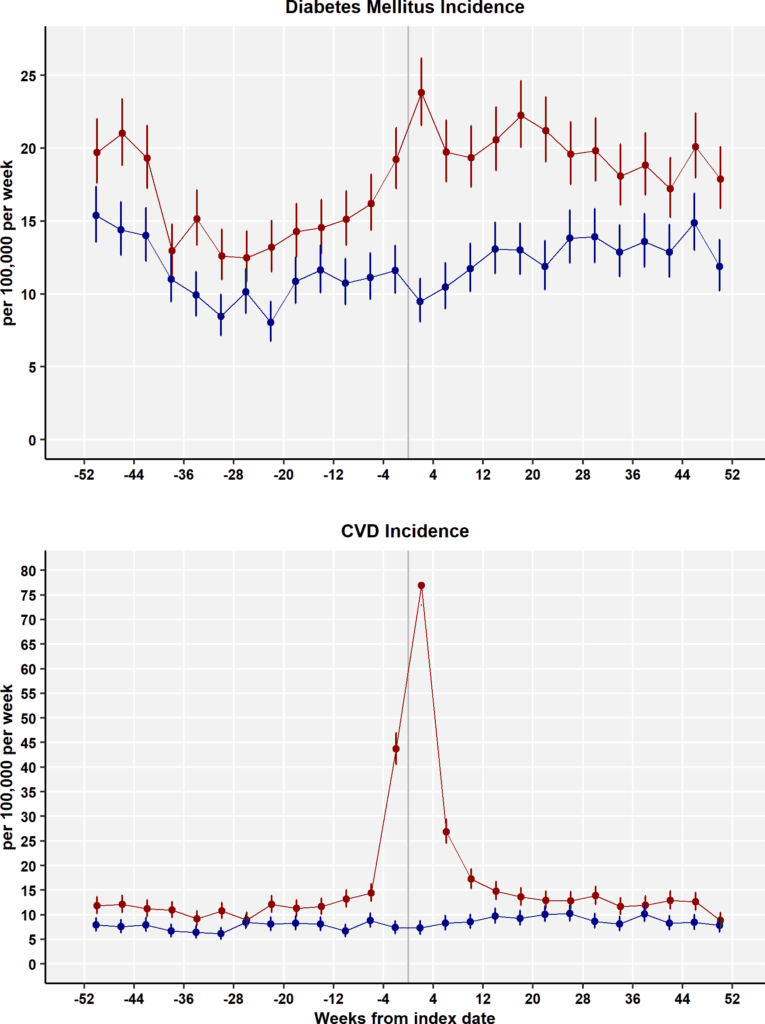
en uno de los primeros estudios de cohorte para examinar a los niños a los que se les hizo la prueba de COVID en las salas de emergencias, y nuevamente a los 90 días, 4,61 TP3T de los niños positivos para COVID tenían síntomas nuevos o persistentes en el seguimiento, en comparación con solo 2,71 TP3T en los niños negativos para COVID.
Estas proporciones casi se duplicaron en los niños hospitalizados.
Además, el estudio identificó síntomas que fueron más comunes en los niños positivos para COVID en el seguimiento, que incluyen: fatiga o debilidad, pérdida de apetito, preocupaciones psicológicas generales y pérdida continua del olfato o el gusto.

Pronóstico: Existente refuerzos basado en la cepa original de COVID (ancestral) puede proporcionar suficiente protección contra los resultados graves de BA.5.
Todos los mayores de 5 años son elegibles para un refuerzo; ¡los mayores de 50 años o inmunocomprometidos son elegibles para un segundo refuerzo!
La directora de salud pública del condado de Los Ángeles, Barbara Ferrer, declaró sobre: mandatos de máscara:: “No creo que debamos conformarnos con una alta mortalidad que afecta desproporcionadamente a las personas de menos recursos económicos y a las personas de color”.
Continuó afirmando que “el enmascaramiento sigue siendo una estrategia que agrega protecciones cuando la transmisión es alta”.
Estar preparado: BA5 ha superado rápidamente a todas las demás variantes en los EE. UU. Todavía no hemos visto evidencia de una nueva variante que pueda superarlo.
Aunque esto puede darnos un breve descanso antes de que surja la siguiente variante, las infecciones repetidas de BA5 también podrían mantener los casos altos en el futuro previsible.
Al reducir la transmisión, le damos al virus menos oportunidades de adaptarse y mantenernos más saludables.
Las capas de protección (máscaras, ventilación, vacunas y pruebas de alta calidad) siguen siendo nuestra mejor defensa.
Fuentes: consulte los enlaces a lo largo y visite nuestro sitio web para obtener más información. https://peoplescdc.org
Disculpa
PCDC se disculpa por nuestra cobertura de la viruela del simio (MPV) la semana pasada. Tanto los voluntarios del PCDC como Los lectores externos notaron que nuestro encuadre perpetuó algunos de los mismos errores de exclusión e intolerancia a los que buscamos oponernos. Incluimos el idioma original aquí para referencia y responsabilidad.* Estamos reflexionando actualmente sobre cómo nos relacionamos con el tema en el futuro. Nosotros tienen como objetivo compartir información que no sea estigmatizante, precisa y prioriza a los más afectados. Si tiene recursos MPV que ha encontrado útil, o ideas sobre cómo PCDC puede contribuir mejor, por favor permítanos saber a través de el formulario vinculado aquí.
